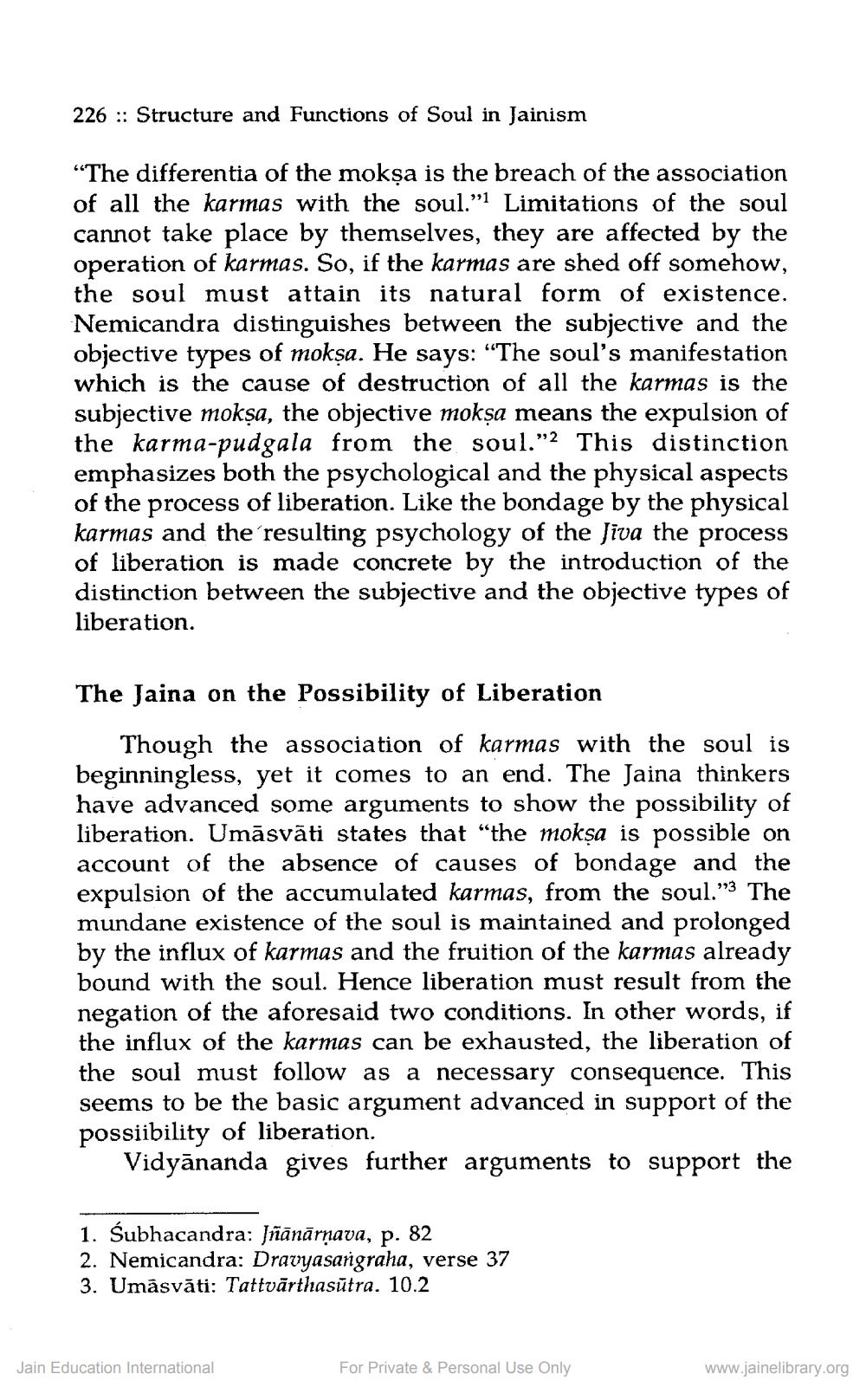________________
226 :: Structure and Functions of Soul in Jainism
“The differentia of the mokṣa is the breach of the association of all the karmas with the soul."1 Limitations of the soul cannot take place by themselves, they are affected by the operation of karmas. So, if the karmas are shed off somehow, the soul must attain its natural form of existence. Nemicandra distinguishes between the subjective and the objective types of moksa. He says: “The soul's manifestation which is the cause of destruction of all the karmas is the subjective mokşa, the objective mokṣa means the expulsion of the karma-pudgala from the soul.”2 This distinction emphasizes both the psychological and the physical aspects of the process of liberation. Like the bondage by the physical karmas and the resulting psychology of the Jiva the process of liberation is made concrete by the introduction of the distinction between the subjective and the objective types of liberation.
The Jaina on the Possibility of Liberation
Though the association of karmas with the soul is beginningless, yet it comes to an end. The Jaina thinkers have advanced some arguments to show the possibility of liberation. Umāsvāti states that “the mokşa is possible on account of the absence of causes of bondage and the expulsion of the accumulated karmas, from the soul.”3 The mundane existence of the soul is maintained and prolonged by the influx of karmas and the fruition of the karmas already bound with the soul. Hence liberation must result from the negation of the aforesaid two conditions. In other words, if the influx of the karmas can be exhausted, the liberation of the soul must follow as a necessary consequence. This seems to be the basic argument advanced in support of the possiibility of liberation.
Vidyānanda gives further arguments to support the
1. Subhacandra: Jñānārnava, p. 82 2. Nemicandra: Dravyasargraha, verse 37 3. Umāsvāti: Tattvārthasūtra. 10.2
Jain Education International
For Private & Personal Use Only
www.jainelibrary.org




